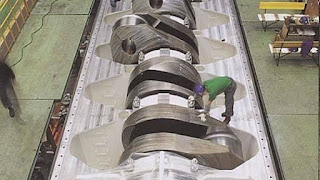
New Bosch tech makes diesel engines far less polluting German engineering firm Bosch has developed technology that uses currently available hardware to drastically bring down nitrous oxide (NOx) emission in diesel cars. The sales of diesel cars have tumbled in the recent months as regulators aim to lower the output of NOx; the gas is harmful to humans and is associated with respiratory problems in urban environments. Bosch claims that it has developed a solution that not only reduces NOx output in diesel engines but practically eliminates it so it falls to a point that’s almost a tenth of the next-generation limits. “We call our system active thermal management because it keeps the most important part of the diesel exhaust, the exhaust gas recirculation (EGR) system, running at its optimal temperature,” Bosch diesel division development boss Michael Krüger told our sister publication Autocar UK. EGRs work best when they are heated by waste gases to more than 200degC, but Krü...

